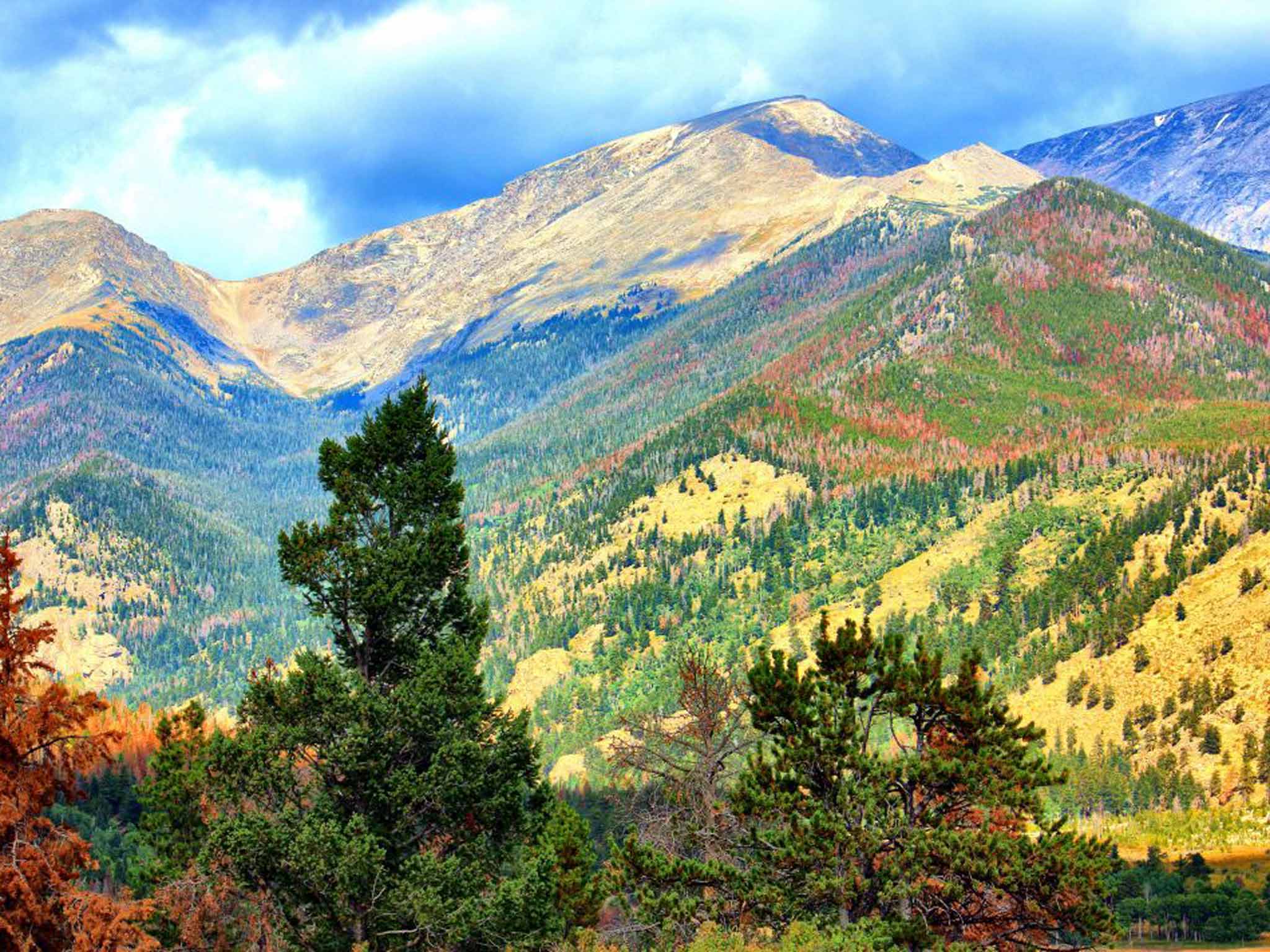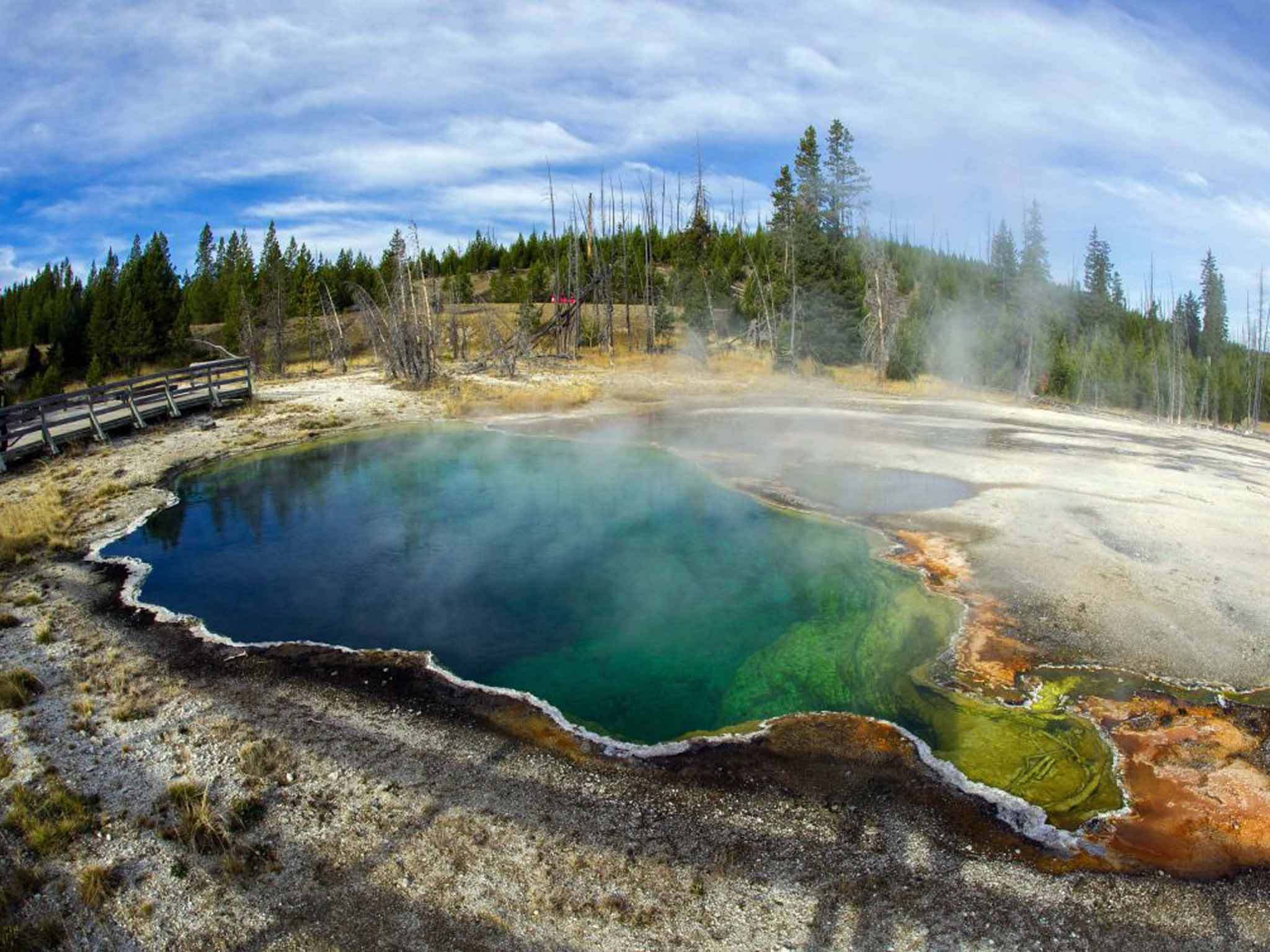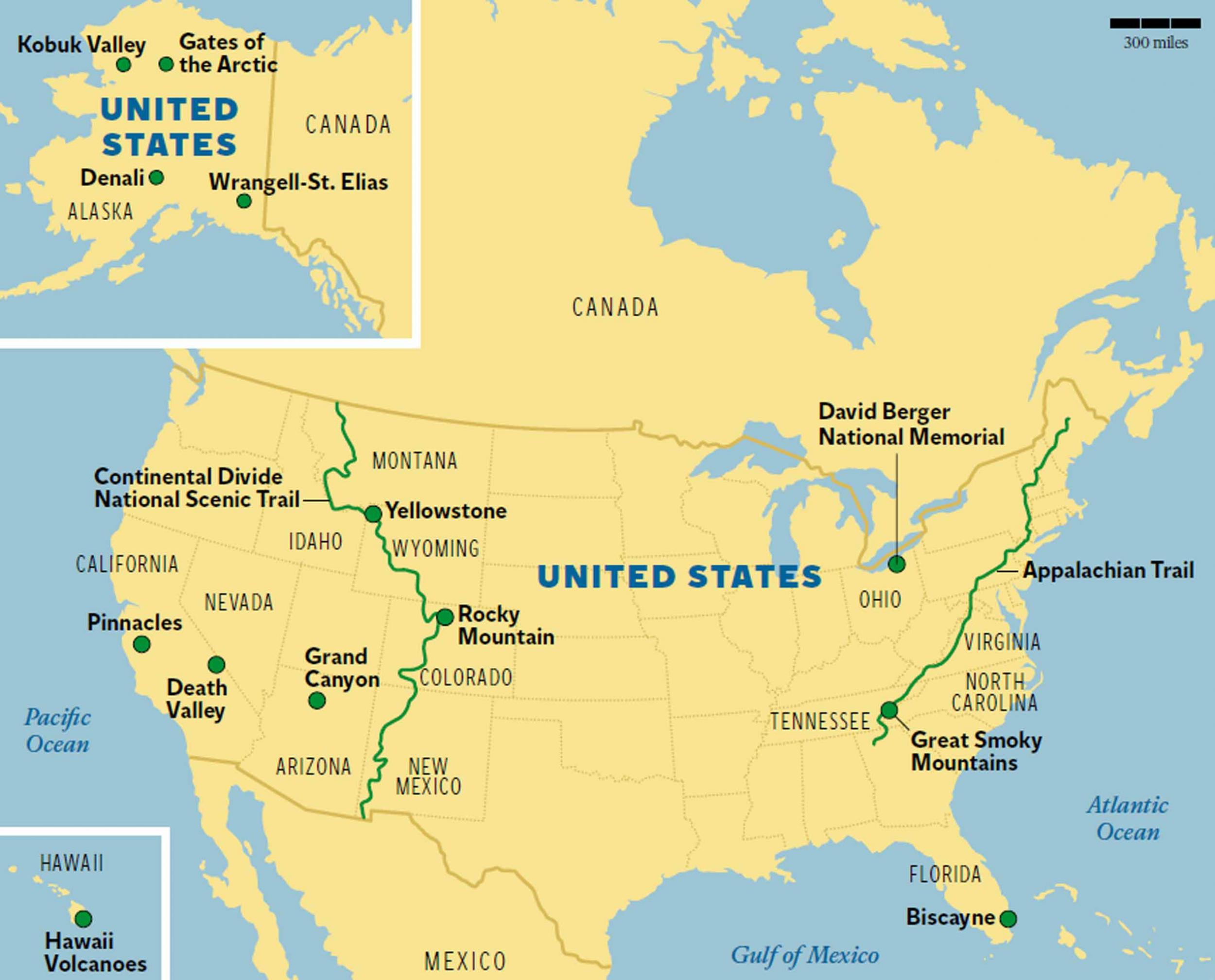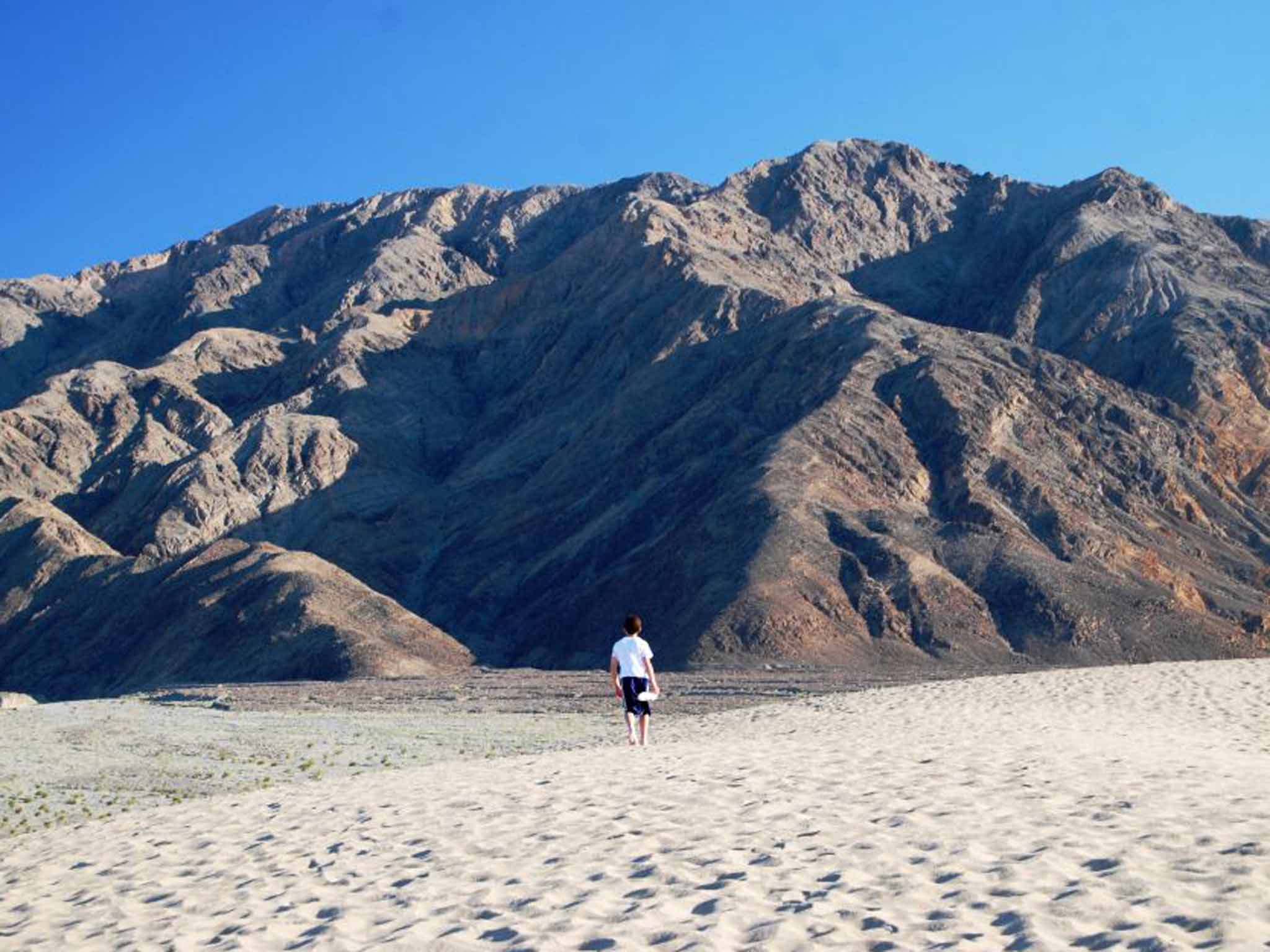A century of National Parks in the United States: From Alaska's frozen expanses to the desert of Death Valley
America's natural wonders are some of the planet's most awe-inspiring, says Chris Leadbeater

Your support helps us to tell the story
From reproductive rights to climate change to Big Tech, The Independent is on the ground when the story is developing. Whether it's investigating the financials of Elon Musk's pro-Trump PAC or producing our latest documentary, 'The A Word', which shines a light on the American women fighting for reproductive rights, we know how important it is to parse out the facts from the messaging.
At such a critical moment in US history, we need reporters on the ground. Your donation allows us to keep sending journalists to speak to both sides of the story.
The Independent is trusted by Americans across the entire political spectrum. And unlike many other quality news outlets, we choose not to lock Americans out of our reporting and analysis with paywalls. We believe quality journalism should be available to everyone, paid for by those who can afford it.
Your support makes all the difference.Woodrow Wilson was never likely to be revered as one of America's mightiest presidents. He was an academic, a quiet man, rather than a thumper of tubs. But he made a lasting contribution to his country's narrative when, on 25 August 1916, he signed the National Park Service (NPS) into existence. He did so, he said, “to conserve the scenery and the natural and historic objects and wildlife therein, and to provide the enjoyment of the same in such a manner as will leave them unimpaired for the enjoyment of future generations”.
A century on, he achieved his aim. The NPS's broad arms now embrace 410 sites across the United States – not just national parks (of which there are 59), but a host of national Trails, Parkways, Monuments and other protected places that form an intricate tapestry for tourists with a desire to explore. You can find details of centennial events at locations across the country at nps.gov/2016 and visittheusa.co.uk – but if you want to see America at its most superlative, the following national sites provide happy extremes in all manner of shapes.
Biggest and highest: Alaska
Alaska is a realm of giants. The sheer scale of America's largest state (it would be the world's 17th biggest country were it a sovereign entity) is apparent in the fact that it plays host to the US's most sizeable protected enclave. Wrangell-St Elias National Park & Preserve (nps.gov/wrst; free entry) is a behemoth of 20,587sq miles, where Mount St Elias rears to 18,008ft (5,489m) as the second highest peak on the continent. It is beaten by Denali (Mount McKinley), a masterful bluff of 20,310ft, which preens within neighbouring Denali National Park (nps.gov/dena; $10/£7). Together, the pair are a haven for climbers and active travellers. Exodus (0845 314 2304; exodus.co.uk) offers “Alaskan Wildlife and Wilderness” – a 16-day group odyssey that spears into both parks for strenuous days of hiking. From £3,849 per person, with flights; five departures this summer.
Smallest: Arkansas
The tiniest US national park (a shard of just 8.5 square miles) flies below the radar of international perception in Arkansas. But Hot Springs National Park (nps.gov/hosp; free) has long been appreciated by Americans – not least the Cherokee and Choctaw, who were fully aware of the thermal waters that bubble from the Ouachita Mountains in the 18th century. Set in the town of the same name, the site hit its stride in the early 20th century – a popularity that spawned “Bathhouse Row”. You can still bathe in neoclassical finesse at the Buckstaff (buckstaffbaths.com; from $33/£24) and Quapaw (quapawbaths.com; from $20/£14) spas. A basic package of seven days' car hire and return flights to state capital Little Rock (50 miles to the north-east) – from Heathrow via Dallas on 21 May – costs from £843pp with British Airways Holidays (0344 493 0787; ba.com/holidays).

Coldest: Alaska
Enormous Alaska can also claim America's frostiest ring-fenced area. Even the name – Gates Of The Arctic National Park and Preserve (nps.gov/gaar; free) – talks of ice, though remarkably, while this northern hermit (it sits above the Arctic Circle, at 67°N) can drop into the bowels of minus 60°C in winter, it can briefly soar to 30°C in summer. This is the time to visit its remote tranche of peaks (the Brooks Range) in search of the polar bears, lynx, wolves and cougars that call it home – but you will need specialist help. Anchorage-based Equinox Wilderness Expeditions (equinoxexpeditions.com) has two forays to the park (plus nearby Kobuk Valley National Park, a roadless expanse of water and sand dunes) planned for August – each offering 12 days of hiking, canoeing and fishing. From $5,690 (£4,064) per person, not including international flights.

Hottest: Hawaii
America's mid-Pacific archipelago is mostly perceived as a beach oasis, but it showcases the full majesty of its magma-fried origins on the south-east side of the island of Hawaii (The Big Island) – where Hawaii Volcanoes National Park (nps.gov/havo) frames two of the planet's feistiest rock gods. Mauna Loa (13,679ft) is generally considered the largest volcano on the planet. It has kept its cool since 1984. The same cannot be said for Kilauea, which has been erupting since 1983, pouring its soul into the ocean in a haze of steam and fire, its lava hitting temperatures of 1,100°C. This spectacle is accessible via Chain of Craters Road – a 19-mile game of dare that curls up to the inferno. Trafalgar (0800 553 5619; trafalgar.com) offers an 11-day Hawaii Discovery holiday that visits the park (plus Oahu, Maui and Kauai). It costs from £2,635 per person, excluding international flights.
Oldest: Wyoming
Yellowstone (nps.gov/yell; seven-day passes from $15/£10.70 per person) is a slice of the American landscape so feted that it earned national park status (the first such enclave on the planet) almost half a century before there was a National Park Service – in 1872. Sprawled across the north-west of Wyoming (so that it ebbs into Montana and Idaho), it is a place for standing and staring, at a host of wonders – the 24-mile gap of the Grand Canyon of the Yellowstone; the roaring two-tier cascade of Yellowstone Falls; the spurting punctuality of the geyser, Old Faithful. Explore (01252 883 846; explore.co.uk) runs Yellowstone And Western Trails, a 15-day group jaunt that spends three days in the park as part of a splendid route that also visits Utah. From £2,699 per person, with flights.

Youngest: California
By contrast, Pinnacles National Park (nps.gov/pinn; seven-day passes from $10/£7 per person) is a stripling. Not in terms of raw geology (its craggy, swarthy piles of stone are millions of years old), but in status – it became the newest national park, upgraded from “National Monument” by the Obama administration, in 2013. It was worthy of promotion – its 30 miles of hiking trails dash between outcrops where climbers swarm and birds of prey (condors, falcons) hover. Located 120 miles south-east of San Francisco, it is within easy day-trip range for tourists who try the Surf California, San Jose and Santa Cruz road trip sold by America As You Like It (020 8742 8299; americaasyoulikeit.com) – seven nights in Silicon Valley and on the beach. From £1,769 per person, with flights, car and hotels.
Driest and Lowest: California
California is not short on serrated spaces. Death Valley National Park (nps.gov/deva; seven- day passes from $10/£7 a head) – thrust so firmly into the east of the state that it crosses into Nevada – can claim two American superlatives. Named by the unfortunate pioneers who stumbled into its desperate inhospitability in 1849, its salt flats and dunes are the driest portion of North America, granted but two inches of rain a year. It is also the lowest, the fiercely saline water of Badwater Basin skulking at 282ft below sea level. Consequently, it is a place best seen from an air-conditioned car. North America Travel Service (0333 323 9099; northamericatravelservice.co.uk) sells Western Parks & Canyons, a 15-day fly-drive looping in and out of Los Angeles, which holes up in Death Valley, in the Furnace Creek Inn. It costs from £2,109 per person – with car hire, flights and hotels.
Wettest: Florida
The Sunshine State rarely turns its gaze from the seafront. So much is shown by Biscayne National Park (nps.gov/bisc; free), a protected 270sq mile pocket due south-east of central Miami, which is 95 per cent water and submerged coral reef. It is a haven for sporty days: fishing, kayaking, windsurfing and diving are all permitted. Island Dreamer Sailing (001 561 281 2689; biscaynenationalparksailing.com) offers six-hour voyages – which allow for snorkelling and swimming – from $149 (£106) per person. A basic package of seven days' car hire and flights from Heathrow to Miami on 12 May costs from £696 per person through Virgin Holidays (0344 557 4321; virginholidays.co.uk).
Busiest: Tennessee
While that Arizona icon Grand Canyon National Park (nps.gov/grca; from $15/£10.70 per person) is surely the most fabled member of the NPS club, the most popular is the mass of leafy glory that drapes itself across Tennessee and North Carolina. Great Smoky Mountains National Park (nps.gov/grsm) greets more than 10 million visitors a year. With good reason. Encompassing an 816sq mile wedge of the Appalachian Range, here is a hiking heaven wearing a coat of fir, the state line coursing through it, ascending to a peak of 6,643ft where Clingmans Dome stares across an ocean of green. Bon Voyage (0800 316 3012; bon-voyage.co.uk) offers a 13-day Blue Ridge Parkway fly-drive, which rolls through Virginia and North Carolina – before pausing in Gatlinburg, the Tennessee gateway to the national park. From £1,795 per person – with flights, car and hotels.
Longest: Colorado
Holidaymakers who are happy on foot are also drawn to the Continental Divide National Scenic Trail, the epic path along the spine of America, which, at 3,100 miles in length, outlasts the more eulogised Appalachian Trail (2,180 miles; nps.gov/appa) in the east. It runs from the Mexican border in New Mexico to Canada's edge at the top of Montana, and also veers into Idaho and Wyoming. But it is at its most dramatic in Colorado, in Rocky Mountains National Park (nps.gov/romo; from $10/£7) – where a 30-mile section is described by the NPS as “breathtaking ... high peaks and fragile alpine tundra”. US operator The Wildland Trekking Company (001 928 379 6383; wildlandtrekking.com) proffers the Continental Divide Loop – a five-day guided hike that charts this area, camping in the wild. Eight departures this summer, from $1,240 (£871) per person – tour only.
Join our commenting forum
Join thought-provoking conversations, follow other Independent readers and see their replies
0Comments